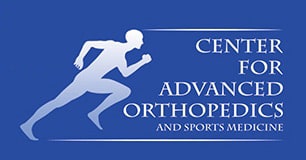Shoulder Replacement
Shoulder Joint Replacement
Although not as common as knee or hip replacement, replacing either part or the entire shoulder joint can be equally beneficial to the patient. Shoulder replacement can be used to remedy a variety of painful conditions, such as osteoarthritis. Each year roughly 53,000 Americans have shoulder replacement surgery.
The team at the Center for Advanced Orthopedics and Sports Medicine has extensive experience with shoulder replacement procedures.
Candidates For Shoulder Replacement Surgery
Conservative treatments are always the first option for all joint problems, but in many cases, the patient still has pain that is interfering with daily life. In the case of shoulder replacement, these symptoms could merit the procedure:
- Severe shoulder pain that interferes with simple, daily activities such as dressing, washing, using the bathroom, or even reaching into a cabinet
- Loss of motion and/or weakness in the shoulder
- Moderate to severe pain while resting; the pain may interfere with sleep
- Failure to respond to physical therapy, cortisone injections, and other treatments
How Do I Prepare For My Shoulder Surgery?
Preparation for these surgeries follows the usual steps of other surgeries: limiting alcohol consumption, stopping smoking for at least two weeks prior and after surgery, and ceasing taking certain drugs and supplements. Preoperative testing including blood work and EKG will also be done prior to surgery.
The most important preparation will be for your recovery. You will need to dedicate time to physical therapy and the home exercise program.
The Shoulder Replacement Procedure
Your Center for Advanced Orthopedics surgeon will replace the natural bone in the ball and socket of your shoulder joint with a metal or plastic end. These are surgeries that will involve extensive physical therapy afterwards.
There are three types of shoulder replacement surgeries:
- Total shoulder replacement — This procedure involves replacing the arthritic joint surfaces with a highly polished metal ball attached to a stem. This is placed within a plastic socket. The ball may be either cemented or “press fit” into the humerus. The all-plastic socket is implanted with bone cement.
If a patient has bone-on-bone contact due to osteoarthritis and has intact rotator cuff tendons, they are good candidates for this procedure. - Partial shoulder replacement — Depending on your unique situation, it may only be necessary to replace the ball of the humerus. This is clinically known as hemiarthroplasty. In these procedures, the head of the humerus is replaced with a metal ball and stem; or, to preserve bone, the joint surface of the humeral head is replaced with a cap-like end without a stem.
- Reverse total shoulder replacement — In patients with completely torn rotator cuffs, severe arthritis and tearing of the rotator cuff, or who have had a previous shoulder replacement fail, we may perform what is known as reverse total shoulder replacement. In these procedures, the socket and metal ball are switched. The metal ball is attached to the shoulder bone instead of the humerus and the plastic socket is attached to the humerus. This allows the patient to lift his or her arm up past 90 degrees by using the deltoid muscle instead of the torn rotator cuff.
How Long Do These Shoulder Surgeries Take?
Shoulder replacement surgery usually takes about two hours. You will be under general anesthesia along with a nerve block. You will also be in recovery for about 2-3 hours before you are released to go home. You are not allowed to drive until your surgeon clears you.
Recovery From Shoulder Replacement Surgery
Our shoulder specialists perform minimally invasive outpatient shoulder replacements routinely. Your postoperative pain will be controlled in part by a nerve block given by the anesthesiologist under ultrasound guidance. You will have moderate pain and swelling in the shoulder once the block wears off. Cold compresses and prescription pain medication will be necessary. Your arm will be in a brace to preclude movement initially, but we’ll start you on physical therapy sooner than you would expect to get your arm and new shoulder working.
Physical therapy will continue for two to three months postoperatively. You will also be expected to do a home exercise program under the supervision of your therapist. The initial phase of therapy will focus on regaining the range of motion. Following this, you will work progressively on strengthening the muscles around the shoulder.
We’ll discuss the details of your recovery in the time leading up to your surgery.



